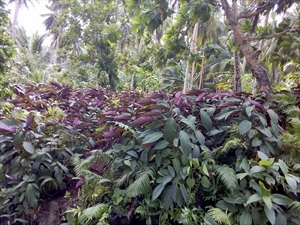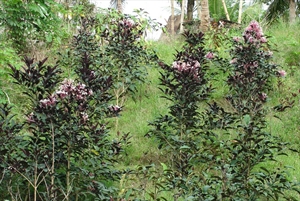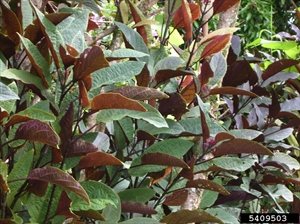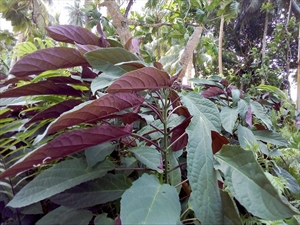- Restricted. Asia, North America (restricted), Caribbean, Oceania. In many Pacific islands.
- Important invasive weed, growing rapidly, producing large amounts of seed and root suckers, forming dense thickets along roadsides, waste grounds, disturbed areas. It has potential to invade relatively intact native forests.
- Perennial shrub up to 5 m, stems almost four-sided. Leaves, in pairs, oblong, 15-20 cm long, green upper surface, dark-purple below. Flowers, many, in showy flat-topped clusters, each a narrow pink tube, 5-8 cm long, ending in five-curved white petals. Fruits, earth-shaped, with four seeds
- Spread: root suckers; seeds by birds and other animals; contaminants of sand and soil; trade in ornamentals.
- Biosecurity: high risk of introduction, showy flowers, medicinal use.
- Biocontrol: no information.
- Cultural control: hand weed or dig out when small.
- Chemical control (see Honolulu rose Fact Sheet no. 443): foliar (picloram; triclopyr; 2,4-D; metsulfuron-methyl; picloram + triclopyr, picloram + 2,4-D; dicamba + 2,4-D); cut-stump (same herbicides); soil (fluroxypyr). In Fiji, glyphosate.











